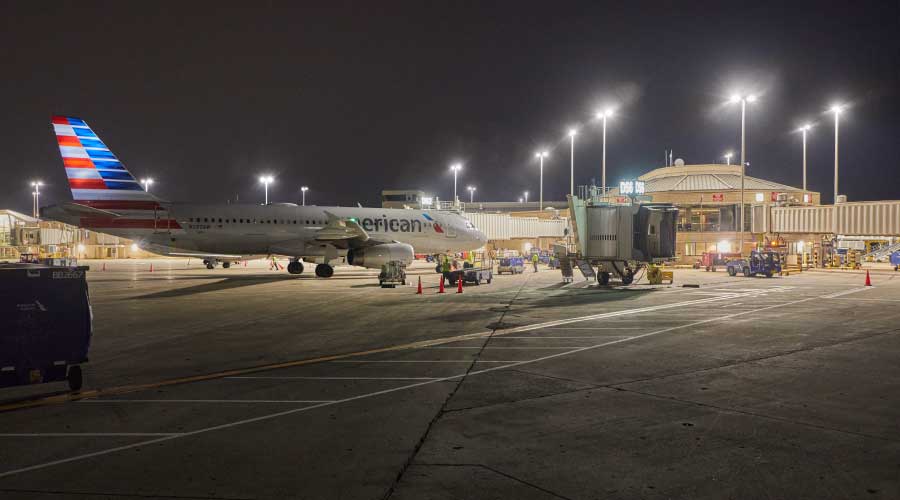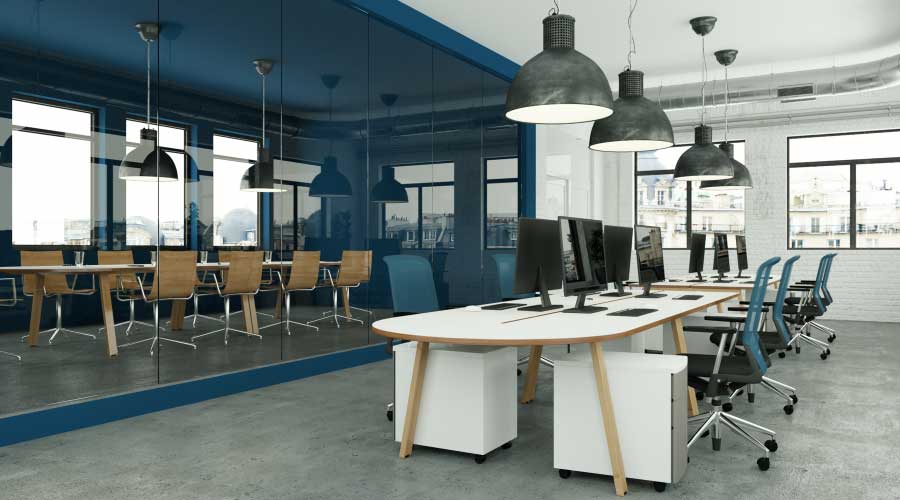The Financial Impact of Efficient Lighting
Three essential financial measures show that lighting upgrades can have significant bottom-line impacts
Energy efficient lighting systems are becoming a widely used means of reducing building operating expenses, increasing profits and adding substantially to the asset value of commercial, institutional and industrial buildings. The National Electrical Manufacturers Association (NEMA) has drawn upon the studies and recommendations of various organizations such as the U. S. Department of Energy, the Environmental Protection Agency, the Building Owners and Managers Association International, the Edison Electric Institute and the National Lighting Bureau to launch the “enLIGHTen America” campaign designed to communicate the financial and environmental value of energy efficiency and conservation. It is a long-term effort to educate users of lighting electricity and to offer practical, affordable solutions which will reduce energy consumption and expense.
James Bodman, Secretary of Energy, says, “More than 75 percent of the nation’s five million commercial, industrial and institutional buildings were built prior to the many groundbreaking energy-efficient technologies currently available today. These buildings annually consume nearly 900 billion kilowatt-hours of electricity costing over $40 billion each year.”
Statistics provided by Anna Stark, program manager for the U.S. Environmental Protection Agency’s ENERGY STAR Commercial Properties, Climate Protection Partnerships Division, reveal that U.S. office buildings waste one-third or more of the total energy they consume. Energy used for lighting falls into this category.
Empirical data from various case studies show that lighting energy savings of more than 50 percent can be achieved by installing the latest technology in fixtures, lamps, ballasts and controls. The reduction in the energy consumption is achieved in two ways. First, the energy needed to provide quality lighting wherever it is needed is lowered by more efficient lamps and ballasts. Secondly, whenever natural light is available in occupied spaces during the daytime, controls reduce electric lighting output to achieve the desired overall footcandle levels by balancing with the changing daylight level. This can be a reduction of 30 percent or more. The addition of other automatic controls will turn off lights partially or completely in unoccupied areas during normal working hours or after the building becomes unoccupied. (See “Payback, ROI and Increased Asset Value”)
Payback and Return On Investment
Most facility executives indicate that a payback of three years or less on the cost of lighting upgrades is a basic and preliminary yardstick used in their decision making. Jim Himonas, a consultant to the NEMA Task Force on Energy Efficiency, suggests that both cost payback and return on investment are of interest in enterprises such as corporations, health care organizations and educational institutions that plan to keep their buildings for three years or more.
Consider this example. If $100,000 is invested in an upgraded, energy-efficient lighting system, and the annual savings are $40,000, the payback is 2.5 years. Himonas says that a more meaningful calculation of return on investment, such as the one provided by Microsoft Excel or Time Value software programs, takes into account other factors including the life of the product, the tax depreciation rate and the effective income tax rate. In the example above, the return on investment is 44.6 percent. It is generally agreed that a well-run corporation produces an annual return on investment in the 20 to 25 percent range. Therefore, any energy-efficiency measure which produces a higher ROI will be considered an attractive use of money. Returns on lighting efficiency have been shown to be in the range of 30 to 50 percent. Charles Zimmerman, a vice president at Wal-Mart, has said, “Energy efficiency is one of the best investments we can make.”
Increase in Building Asset Value
When presenting lighting upgrade proposals for approval, it is important to focus on the measure that will be most relevant to the organization. In addition to ROI, Himonas says that increased building asset value has a particular appeal to rental property building owners and management companies that anticipate selling a property.
Stark explains that if an organization avoids spending 20 cents on utilities, it increases its operating income by the same amount. She says that the current capitalization rate of rental building asset value is approximately 7 percent. Therefore, by dividing the 20 cents by .07, the asset value is increased by $2.86 or 14.3 times the savings.
Himonas concurs and offers an example of a building in which the annual savings are $157,500 on an investment of $400,000. The payback is 2.5 years and the ROI is 43.9 percent. Using the capitalization rate suggested by Stark, the asset increase is $2,250,000 — a substantial increase in building resale value.
ENERGY STAR offers up a success story of one commercial real estate company that drastically increased its asset value through energy efficiency improvements. Transwestern Commercial Services is a commercial real estate firm that operates through six functional lines of business: agency leasing, property and facility management, investment services, tenant advisory, development, and research. Transwestern is known for its sound energy management process, having invested more than $12 million in efficiency upgrades — including lighting — in 2006. The result? Energy cost was reduced by 25 percent. Those savings led to an estimated increase in the company’s portfolio value by at least $344 million.
Beyond the measurable provisions of energy efficiency, the overall lighting system design also affects a facility’s value in terms of appearance and occupant satisfaction. ”One of the most fundamental questions a building owner or manager should ask themselves is, ‘Why do we need lighting for this building?’“ says James Bachner, director of communications at the National Lighting Bureau. “The potential for positive impact relates to the nature of the building and what goes on inside. Good lighting makes a building more valuable”
Good lighting goes beyond just retrofitting lamps and ballasts to increase energy efficiency. It centers on rethinking the entire lighting plan. “You have to give the facility the light it needs,” says Gary Le Francois, senior vice president and director of engineering for Transwestern. “Sometimes by swapping out four T-12 lamps for two T8s with a reflector, you wind up with more light than you need for a space. You can’t just go in and say I’m going to delamp because it’s an energy saver. It may not always be the most appropriate way to do it.”
Getting Started
To boost energy efficiency and increase the overall value of the asset, Le Francois suggests relying on the skills and knowledge of a lighting designer rather than an architect. A lighting designer will tour the facility, prepare an assessment of lighting upgrade needs and help implement a plan that provides the highest level for the facility — increased energy savings, productivity and value.
The NEMA enLIGHTen America program is a comprehensive, helpful source which suggests other design information available from manufacturers, consulting engineers, energy services companies and distributors. It will also provide the tips, tools and complete information to help you to undertake a lighting upgrade and to grow your bottom line and asset value.
Payback, ROI and
Increased Asset Value
The following cost/benefit analysis shows the payback, return on investment and increased asset value of the installation of an automatic lighting control system. The financial gains are the result of energy consumption reduction.
| Building Size |
1,000,000 Square Feet |
| Lighting Watts per Square Foot |
1.5 |
| Annual Lighting Hours |
3,500 |
| Annual Kilowatt Hours |
5,250,000 |
| Annual Lighting Cost @ $0.10 KWH |
$525,000 |
|
Percent Savings
|
30% |
|
Annual Savings
|
$157,500 |
|
Savings per Square Foot
|
$0.157 |
|
Installed Cost of Equipment
|
$400,000 |
|
Payback
|
2.5 Years |
|
Annual Return on Investment
|
43.9% |
|
Five Year Net Savings
|
$387,500 |
Notes
- Nonresidential KWH rate supplied by Edison Electric Institute.
- Return on investment calculation is based on the annual savings plus the tax benefit of depreciation. A 34 percent tax rate is assumed. Cost is depreciated over 7 years using a modified accelerated cost recovery system. Product life is 12 years.
Building Asset Value Increase Calculation
To determine the increased asset value due to the savings generated by the reduction in lighting expense, the key pieces of information to use are the annual savings, the installed cost of the equipment and the capitalization rate. Currently, a commonly used rate is 7 to 8 percent. Enter it into a capitalization rate calculation formula to determine the amount of the increased asset value. From the above example, the increased asset value would be:
Increase In Net Operating Income
($157,500)
Capitalization Rate (7 percent)
|
= |
Increased Asset Value
$2,250,000
|
|
Related Topics:















